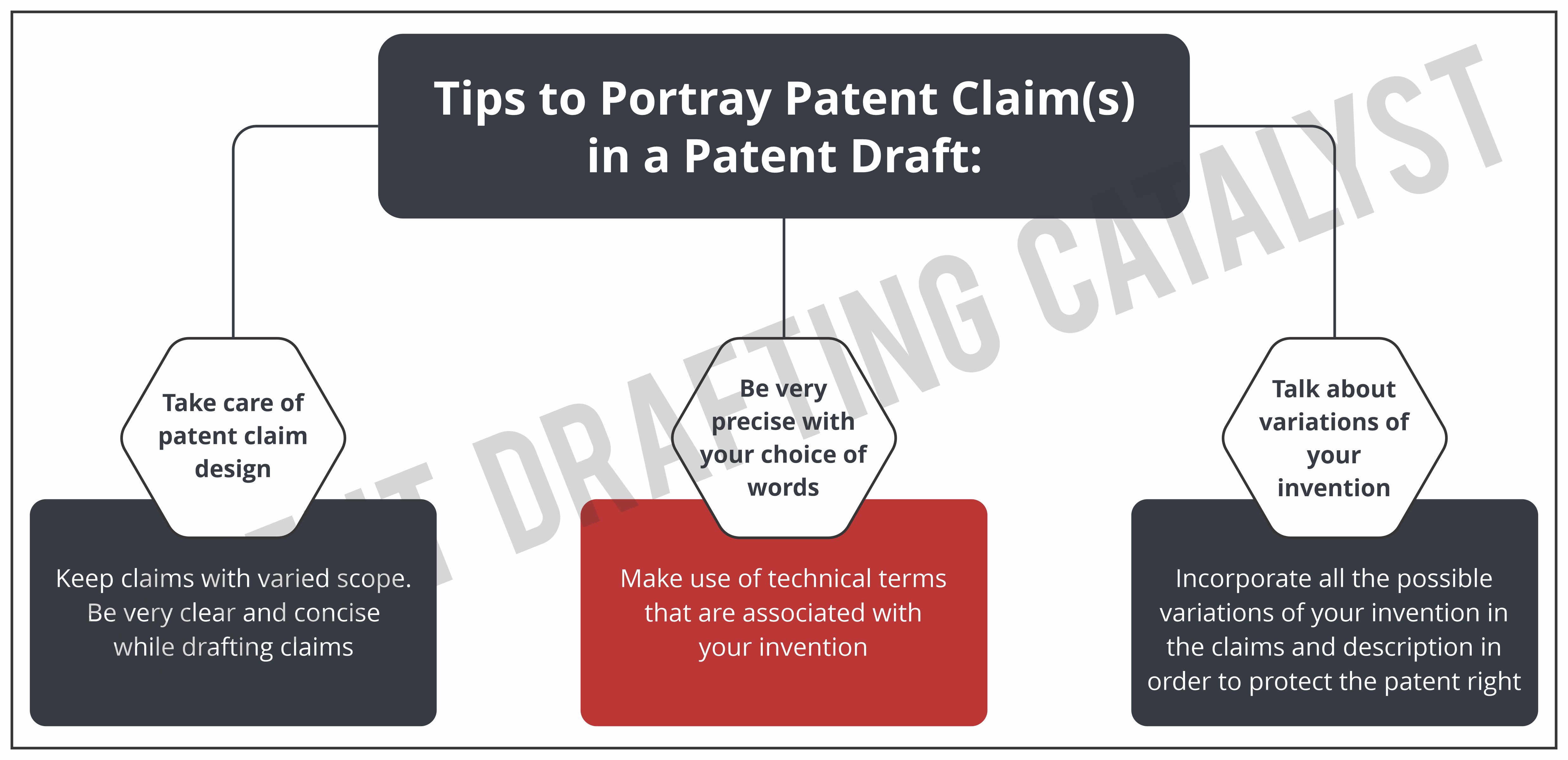Inventors get patent grant only when the complete invention or part of it meets all the patentability criteria. Patent claims put forth what we intend to get a patent grant for. Therefore, a patent claim is of foremost importance in a patent draft. It serves the purpose of defining the scope or limits of legal protection. The Patent Office examiner gives first and foremost importance to Claims at the time of examining the Patent Application. Therefore, it is very much prudent for you as an inventor to draft the claims perfectly.
Patent Claim Drafting: Key Steps
- Draft the Patent Claim first: at the time of patent drafting, it is advisable that you draft the claims before preparing the specifications. This will give you and your patent agent a clear view of what terms need a thorough description.
- After writing the claims, put forth and discuss it with your agent/ attorney.
Note: A patent attorney or agent is an expert in matters of patent draft preparation. Hence, it is advisable to seek their help at the time of patent draft construction.
- Revise the claims after preparing the specifications. This is to ensure that your claims are in conjunction with the invention description.
Also Read:US Patent Proofreading – with USPTO Best Practices
Tips to portray Patent Claim(s) in a Patent Draft:
Patent claims clearly define the invention for what we seeking patent protection. The drafting of the patent claim(s) decides whether your invention is novel or if it is infringing upon someone else’s invention.
- Take care of patent claim design: it talks about how we should represent our claims in the draft. That is, how much and what you are covering under your patent scope.
- Be mindful of drafting claims of varying scope at the time of patent drafting. Also, include both independent and dependent claims in mixed fashion. There is no hard and fast rule that a dependent claim will follow an independent claim.
- Include patent claims of both broad and narrow scope. This works at your advantage, as claims with broad scope catch a wider group of infringers. On the other hand, claims with narrow scope make your invention more definite and precise.
- Write your claims in a very clear and concise form.
- Choice of words: choose your words very precisely while drafting the claims. Also, draft it in terms of the technical features of your invention. At the same time, make sure that the statement of your claims explains your invention and its variants appropriately.
Use technical words while writing the Patent claims and explain to them while writing the invention description. Make it a point to write the claims in positive terms. Say, for instance, write “a hollow cylinder” instead of “a cylinder that is not solid”.
- Talk about variations of your invention: There are many potential competitors trying to infringe your claim. Therefore, incorporate all the possible variations of your invention in the claims and description in order to protect the patent right. Try to cover the competing products as much as you can and make sure your patent claims overcome the prior art.
What do we bring to you?
Perfect Patent Claim Construction takes your invention to different horizons. We, at Patent Drafting Catalyst, know that writing a patent application is not just about jotting down the claims and invention description. Our efficient team of patent drafters makes sure that your application passes every toll gate of prosecution. We strictly follow the USPTO guidelines while preparing drafts for our clients. Our services are available online and that too at budget-friendly rates.

